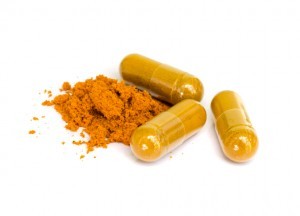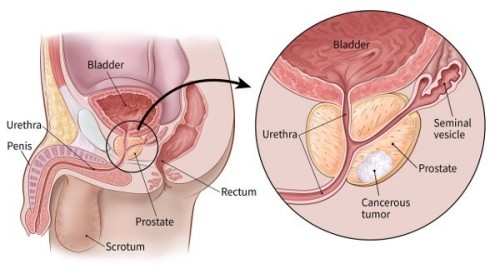Dear Cancer Coach- I’ve been diagnosed with prostate cancer. PSA is 7 now, slowly gained from PSA 2 over a
few years since I’ve moved into my 60 years old status, currently 68.
My biopsy was 3+3 and the oncologist said I was at the low/early stage prostate cancer.
I am sorry to read of your prostate cancer diagnosis. When this cancer is diagnosed in an early stage such as yours, the prognosis is excellent. I am asked about early stage prostate cancer frequently so I have completed a fair amount of current research on your situation. In general my research has found many articles and studies reporting that early stage prostate cancer is over-treated. The treatment often results in short and long-term side effects. Therefore my opinion would be to pursue the non-toxic therapies below in addition to keeping a close watch on your situation.
Ken- if you combine the lifestyle therapies studied by Dr. Ornish and consider curcumin, green tea extract, vitamin D3, grape seed extract and resveritrol (all can be purchased through Amazon.com) I think you will be able to manage your prostate cancer without the need for toxic therapies.
Let me know if you have any questions. Thanks and hang in there.
Recommended Reading:
“In a small study, the researchers tracked 30 men with low-risk prostate cancer who decided against conventional medical treatment such as surgery and radiation or hormone therapy.
The men underwent three months of major lifestyle changes, including eating a diet rich in fruits, vegetables, whole grains, legumes and soy products, moderate exercise such as walking for half an hour a day, and an hour of daily stress management methods such as meditation.
As expected, they lost weight, lowered their blood pressure and saw other health improvements. But the researchers found more profound changes when they compared prostate biopsies taken before and after the lifestyle changes.
After the three months, the men had changes in activity in about 500 genes — including 48 that were turned on and 453 genes that were turned off…”
“Curcumin could be a potentially therapeutic anti‐cancer agent, as it significantly inhibits prostate cancer growth, as exemplified by LNCaP in vivo, and has the potential to prevent the progression of this cancer to its hormone refractory state..”
“Over the last 15 years an intensive effort that includes epidemiological, pre-clinical and early clinical investigations has been performed to evaluate the role of green tea in the prevention and/or treatment of prostate cancer (PCa)…”
“GSE inhibits the growth of prostate cancer PC-3 cells and can be used as a new drug for the treatment of prostate cancer…”
The Most BioAvailable Curcumin Formulas
“Based on a review of these studies, it is evident that better bioavailability of formulated curcumin (CU) products is mostly attributed to improved solubility, stability, and possibly low first-pass metabolism”
A search of the Pubmed database for the word curcumin yields 601 studies spaning health topics from multiple myeloma and colorectal cancer, to chemotherapies that synergizes with CU, to Alzheimer’s Disease, arthritis and more. Based on years of reading studies and personal accounts, I think it is safe to say that CU supplementation is safe and relatively inexpensive.

I have read about myeloma patients taking daily doses of CU from 400 milligrams to 8 grams (1000 milligrams = 1 gram). By almost any measure, CU is a safe, inexpensive wonder drug.
The only challenge is that CU is famously difficult to absorb in the body. In other words, a person has to mix curcumin with some sort of fat (coconut oil, chocolate, etc.) or take a brand of curcumin capsule that is already formulated to be more “bioavailable” in order to derive the full benefit of CU.
The study linked and exerpted below reviews different formulations of CU. The study itself lists the three most bioavailable formulation/brand of CU and I’ve added an excerpt from a further review from Consumerlab.com that lists four additional bioavailable brands of CU.
Recommended Reading:
“CU is a bright yellow chemical produced by some plants. It is the principal curcuminoid of turmeric (Curcuma longa), a member of the ginger family, Zingiberaceae. It is sold as an herbal supplement, cosmetics ingredient, food flavoring, and food coloring.[1]“
“Curcumin is a widely studied natural compound which has shown tremendous in vitro therapeutic potential. Despite that, the clinical efficacy of the native CU is weak due to its low bioavailability and high metabolism in the gastrointestinal tract. During the last decade, researchers have come up with different formulations with a focus on improving the bioavailability of curcumin. As a result, a significant number of bioavailable curcumin-based formulations were introduced with the varying range of enhanced bioavailability.
The purpose of this review is to collate the published clinical studies of CU products with improved bioavailability over conventional (unformulated) CU. Based on the literature search, 11 curcumin formulations with available human bioavailability and pharmacokinetics data were included in this review. Further, the data on clinical study design, analytical method, pharmacokinetic parameters and other relevant details of each formulation were extracted.
Based on a review of these studies, it is evident that better bioavailability of formulated curcumin products is mostly attributed to improved solubility, stability, and possibly low first-pass metabolism. The review hopes to provide a quick reference guide for anyone looking information on these bioavailable curcumin formulations.
Based on the published reports,
exhibited over 100-fold higher bioavailability relative to reference unformulated CU. Suggested mechanisms accounting for improved bioavailability of the formulations and details on the bioanalysis methods are also discussed.”
According to Consumerlab.com:
“Novasol has the highest bioavailability (185 x compared to unforumulated CU), followed by Curcuwin (136 x), Longvida (100 x), Meriva (48 x), BCM-95 (27 x), Curcumin C3 Complex + Bioperene (20 x), and then Theracumin (16 x).”




